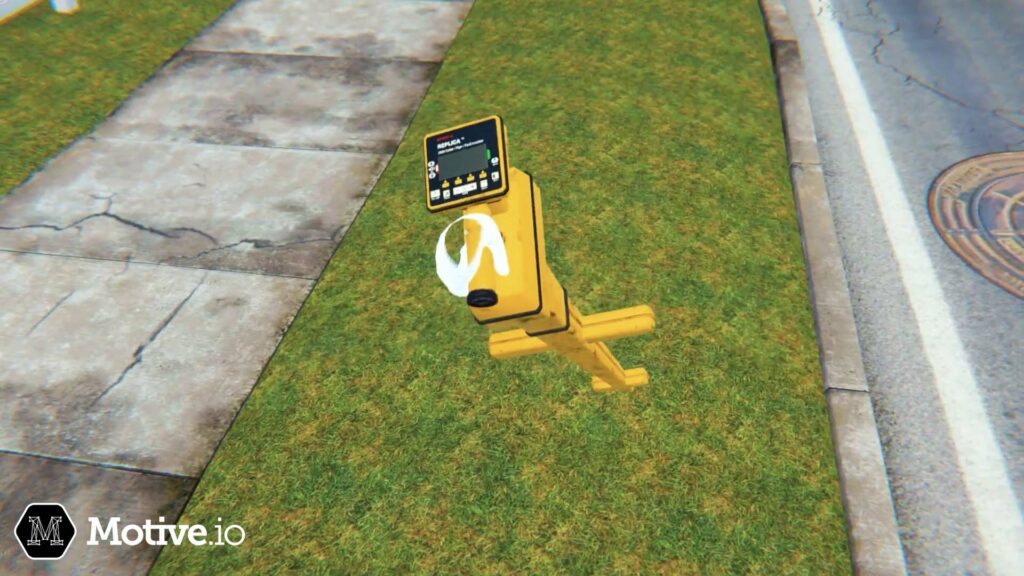Virtual reality training is growing in popularity. The benefits are being seen throughout many industries, with employees reporting increased knowledge retention and greater confidence post-training after choosing the right use case in VR. Organizations are also seeing the benefits not only when considering cost and time savings, but also with better trained employees.
With more organizations looking to introduce VR training into their training programs, it’s easy to jump in without thoroughly thinking about whether or not VR will be impactful in the use case you plan to use. Read through this guide to decide whether VR training will fit well with the skills you are hoping to train.
What makes for a good use case in VR?
Not every scenario is better delivered in virtual reality. Certain skills are better received in different learning environments. Ask yourself whether the use case you plan to put forward would enhance an employee’s learning experience and fully take advantage of the benefits to VR using the following.
The physical environment and equipment factor into the training
VR training enables employees to become comfortable in the environment they will be working in. Depending on the VR vendor you decide to work with, your workspace can be replicated into the virtual world, allowing employees the opportunity to familiarize themselves with the tools they’ll be using. With a use case that requires manipulation of objects and navigation of a physical space, 6 degrees of freedom will enable greater engagement with your trainee.
The subject matter is procedural

Virtual reality is a great place to practice and repeat processes. Your training program should include a skill that takes a list of steps to complete. The ability for repetition in VR will help your employees build the skill. The data extracted from your VR training scenario will also assist in understanding which steps in the procedure your employees are making mistakes or having difficulty with, allowing you to adjust your training accordingly and ensure employees are ready when they go to work.
The training can be represented by a scenario with decision points
Navigating through different decisions is an integral part of learning specific procedures. One benefit to VR training is the ability to teach and test these decision paths through branching scenarios. Trainees can then make and learn from their mistakes in a safe and controlled environment. Having to make these choices will help reinforce the path towards successful completion of a skill for the trainee.
The subject matter is conversational
Training for soft skills in VR is becoming more popular. A study by PWC found that employees training soft skills in VR were 275% more confident to apply the skills they learned after training compared to traditional learning. If your use case requires conversation, whether it be letting go of an employee or dealing with a difficult customer, you’re in luck. VR training can include realistic avatars who utilize conversational AI to help employees practice these skills.
The subject matter does not involve fine motor manipulation
Think about whether fine motor manipulation is one of the skills you want to teach, like how to suture, or if it is peripheral to the task at hand, like turning a screwdriver. If the fine motor skill is what you want to teach, typical VR with controllers in hands is not particularly good at mimicking fine motor manipulation. If the fine motor skill is something that people already know how to do, and therefore not something that the training needs to replicate for learning purposes, then you don’t need to rule out VR as a medium.
For example, a step in a machine assembly may be to screw a plate onto an electrical box. The important step is to remember to put the plate on, and not how to operate the screw driver.
The subject matter does not involve teaching software
Software training is best left to traditional training. Trainees can practice and test these skills directly on computers without the need for an additional piece of technology. Gaining practical experience can be done using traditional keyboards and mice.
The subject matter does not involve academic or knowledge based skills
Academic or knowledge based skills, such as company history or policy, are better learned in traditional training methods. Learning these skills often requires reading and recall, which is best done outside of virtual reality.
The subject matter does not requires a lot of reading
Reading too much in virtual reality can feel uncomfortable. For subject matter that requires trainees to read large amounts of text, feel free to stick to traditional training methods.
Examples of good use cases
Virtual reality training has proven as a strong modality across a multitude of industries. We recommend using this type of training when, for example, your employees need to learn safety procedures or train their soft skills. Check out the following strong use cases:
- Medical simulation training to prepare for crisis situations
- Utility locate training to practice safety procedures in dangerous environments
- Personal protective equipment training for clean donning and doffing
- Food safety training on cleaning protocol to minimize bacteria
- Mining safety training to teach hazard awareness and response
You’ve chosen your use case in VR, now what?
After discussing your use case with your VR vendor, it’s time to start building out your scenario. With VR training 2.0, developers create your 3D environment while training teams have control over the creation and editing of content. This allows you to test your training scenario while building it, as well as enables easy deployment of future changes. This makes your VR training program scalable and leads to both cost and time savings.
Ensure you’re ready to implement the correct use case and take advantage of everything training in virtual reality has to offer. With both the right use case and tools, you will be setting yourself up for success in the VR training world.
Are you interested in learning more about learning design for VR?
Download our VR Learning Design Guide: Virtual Reality Learning Design: Best Practices for Trainee Success.
Latest Posts
Stay in the Know
Want to stay up-to-date with what is going on in the world of immersive training? Subscribe to the Motive Blog.
Ready to revolutionize your training program?
We’re ready to show you how seamlessly you can create, edit and deploy VR training modules. Our team is standing by to help you revolutionize your training program.





